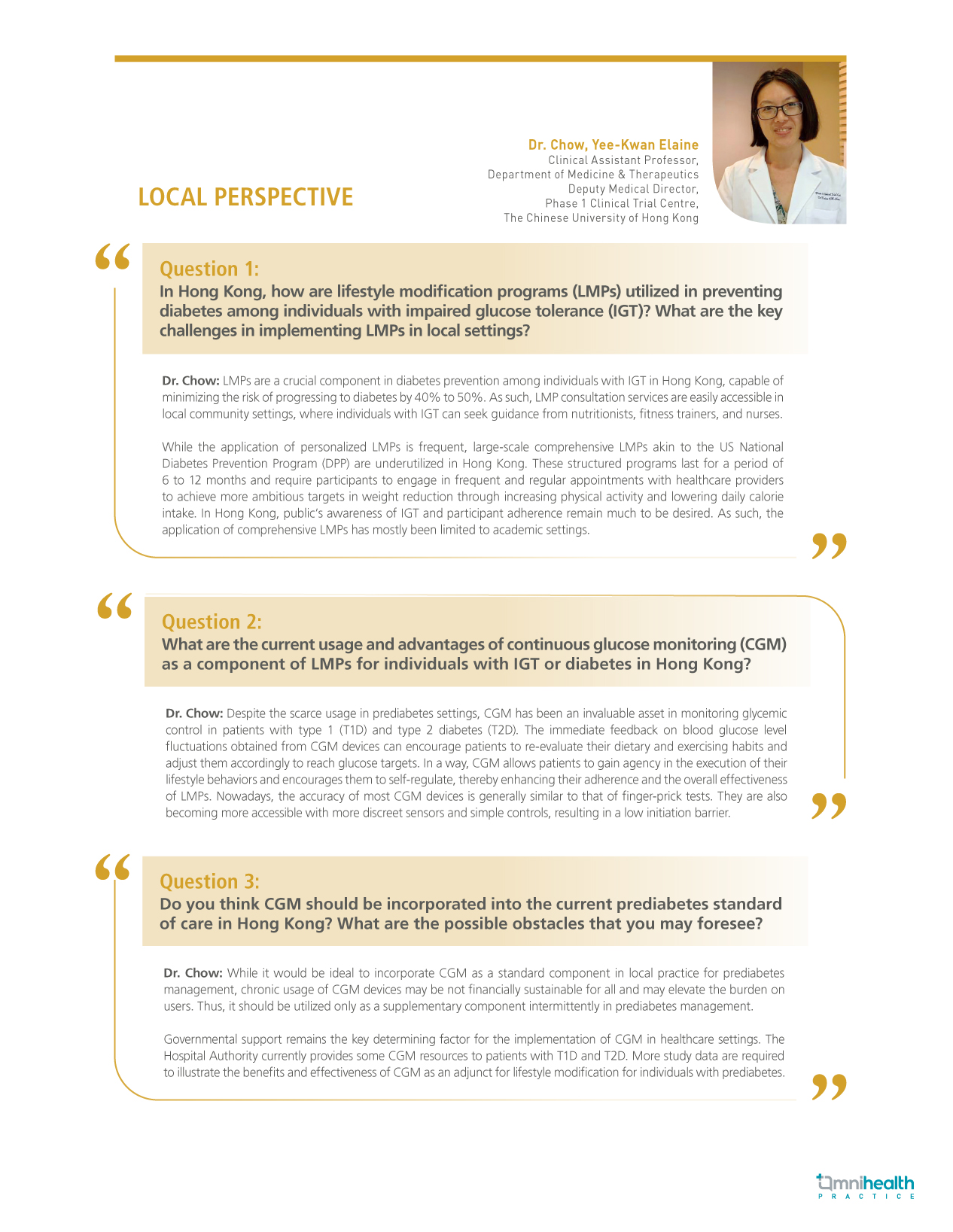CONFERENCE UPDATE: EASD 2023
isCGM exhibited remarkable efficacy as an adjunct to lifestyle modification in patients with impaired glucose tolerance: Interim analysis of the Flash LMP study
Lifestyle modification is the cornerstone of diabetes prevention but remains challenging to disseminate in the real world.1 An increasing number of studies have shown that continuous glucose monitoring (CGM) in people with type 2 diabetes mellitus (T2DM) improves glycemia in patients treated with both insulin and non-insulin agents, in part, through behavioral and lifestyle changes.1 However, randomized controlled trials (RCTs) on CGM-based lifestyle interventions in prediabetes settings have been limited.1 At the EASD Annual Meeting 2023, Dr. Chow, Yee-Kwan Elaine from the Department of Medicine and Therapeutics, the Chinese University of Hong Kong, shared her team’s interim results of the Flash LMP study.1
The Flash LMP study was a single-center, parallel-group, non-masked RCT conducted to compare the efficacy of intermittently-scanned CGM (isCGM)-assisted lifestyle modification program (LMP) to LMP alone in improving glucose tolerance among patients with impaired glucose tolerance (IGT).1 Patients aged 18-65 years with a body-mass index (BMI) of 18kg/m2-40kg/m2 and a 2-hour plasma glucose (PG) of 7.8mmol/L-11mmol/L in the 75g oral glucose tolerance test (OGTT) were randomized to receive an isCGM-accompanied 12-month LMP (n=89) or a 12-month LMP alone (n=88).1 The 12-month LMP for both groups consisted of a 4-month intensive phase with weekly contact, followed by an 8-month maintenance phase with monthly contact.1 Assessments were conducted at baseline, months 4, 8, and 12 which included OGTT with 0, 1-hour, and 2-hour PG, HbA1c, lipid profile, body weight, 3-day diet record, physical activity, and other questionnaires.1 The primary endpoint of this study was the change in 1-hour PG from baseline.1 Secondary endpoints included the change in fasting PG, weight, BMI, blood pressure, and heart rate from baseline.1
As of the time of the presentation, interim results at month 4 were available. The CGM + LMP group had achieved a daily average scan frequency of 9.5 times and a sensor active time of 86%.1 In the intention-to-treat population, patients in the CGM + LMP group had a greater improvement in 1-hour PG compared to their counterparts in the LMP group (-1.2 vs. -0.7mmol/L; mean MD=-0.46mmol/L; 95% CI: -1.04 to 0.13mmol/L).1 The CGM + LMP group also experienced a slightly greater reduction in weight (-4.6% vs. -4.2%), systolic blood pressure (SBP) (-5.9 vs. -2.8mmHg), diastolic blood pressure (DBP) (-4.3 vs. -2.1mmHg) and heart rate (-1.3 vs. 2.4 beats/min) compared with the LMP group.1 Furthermore, numerically greater reductions in daily energy, carbohydrates, total sugar, and fat intake were observed in the CGM + LMP group during the assessment at month 4.1
In the per-protocol analysis, which excluded 9 patients for having <70% of active sensor time and consultation attendance, patients in the CGM + LMP group demonstrated a significant reduction in the 1-hour PG (MD=-0.6mmol/L; 95% CI: -1.18 to -0.02; p=0.04) and numerically higher reduction in weight (-5.1kg vs. -4.2kg) than patients in the LMP group.1 The analysis also indicated a significant association between higher sensor active time and a greater percentage of weight loss in the CGM + LMP group (r=-0.364; p=0.002).1 In terms of safety, there were only two device-related adverse events, which were mild sensitization reactions not leading to discontinuation.1
In conclusion, isCGM as an addition to LMP may allow greater improvements in glucose tolerance among patients with IGT.1 This ongoing trial will confirm whether these results are sustained at 12 months and beyond.1


